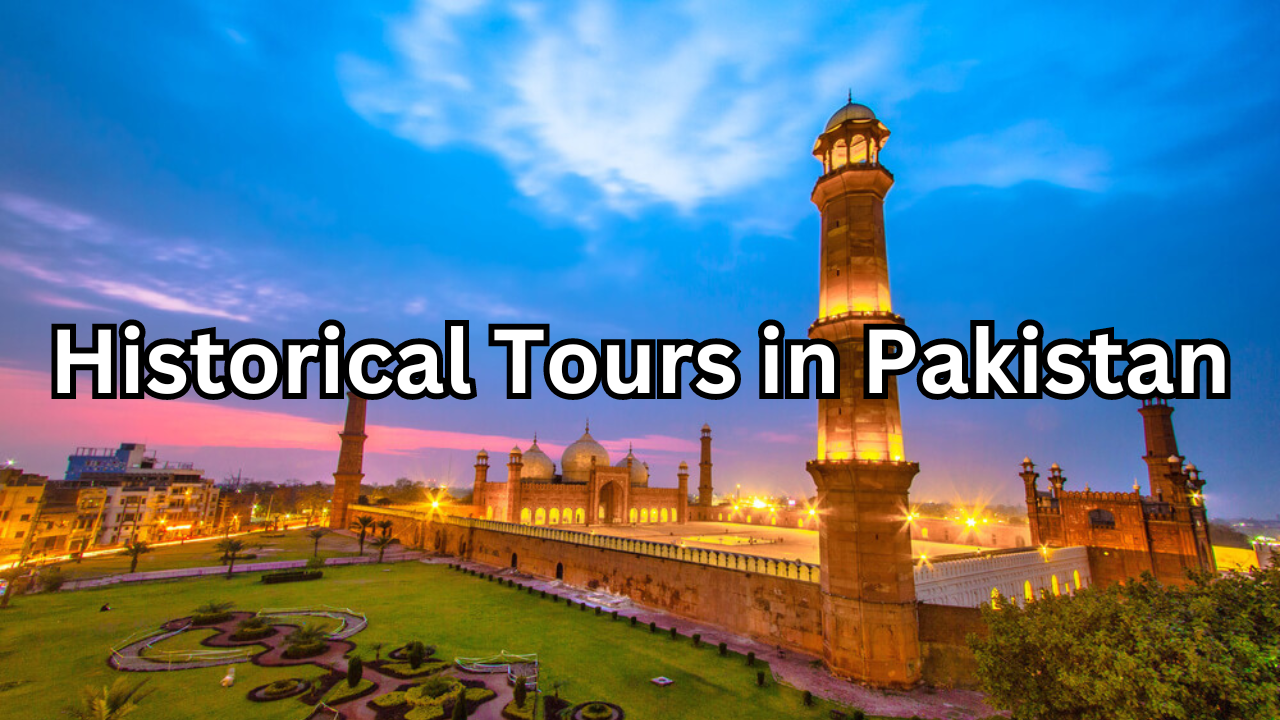Table of Contents
Introduction
Pakistan, a land of diverse cultures and rich history, is home to some of the world’s most remarkable historical sites. From ancient civilizations that date back thousands of years to the grandeur of the Mughal Empire and the legacies of colonial rule, Pakistan offers a fascinating journey through time. Historical tours in Pakistan provide a unique opportunity to explore the remnants of these bygone eras, offering insights into the cultural, architectural, and social evolutions that have shaped the region.
The significance of these historical tours lies not only in their educational value but also in their ability to connect us with the past. Walking through the ruins of Mohenjo-Daro or Harappa, visitors can imagine life in the ancient Indus Valley Civilization, one of the world’s earliest urban cultures. In the serene valleys of Gandhara, the influence of Buddhism and its spread across Asia can be traced through the remnants of monasteries and stupas. The architectural marvels of the Mughal era, such as the Lahore Fort and Badshahi Mosque, showcase the artistic and engineering prowess of one of history’s greatest empires.
Moreover, these tours highlight the cultural amalgamation that defines modern-day Pakistan. From the bustling streets of Lahore, where Mughal and colonial legacies coexist, to the ancient trade routes that passed through the north, each region of Pakistan tells a different story. By visiting these historical sites, travelers can gain a deeper understanding of the country’s rich heritage and the historical contexts that continue to influence its present and future.
Overview of Historical Tours in Pakistan
Pakistan’s historical heritage is a tapestry woven from a myriad of cultures, civilizations, and epochs. The region, known as the cradle of civilization, has been a melting pot of diverse cultures and traditions for millennia. It is home to some of the world’s oldest and most significant archaeological sites, such as Mohenjo-Daro and Harappa, which date back to the ancient Indus Valley Civilization around 2500 BCE. These sites provide invaluable insights into one of the earliest urban cultures, known for its advanced urban planning, architecture, and social organization.
Moving forward in time, the Gandhara civilization flourished in the north, particularly around Taxila and Swat, where the influence of Buddhism left a lasting imprint through magnificent stupas and monasteries. The region’s strategic location made it a hub of cultural and commercial exchange, significantly influencing the spread of Buddhism into Central Asia and beyond.
The Mughal era brought another wave of cultural and architectural brilliance to Pakistan. The Mughals, with their Persian-influenced architecture and artistry, left behind an array of stunning monuments. Lahore, often referred to as the cultural capital of Pakistan, is home to the Lahore Fort, Badshahi Mosque, and Shalimar Gardens, all testament to the grandeur and sophistication of Mughal design and engineering.
The colonial period introduced a new architectural style and urban planning that can be seen in the historic buildings of Karachi and Lahore. Structures like Quaid-e-Azam’s Mausoleum and Frere Hall in Karachi reflect the British colonial influence that has shaped much of modern Pakistan’s urban landscape.
In addition to these prominent epochs, Pakistan’s heritage includes a myriad of other significant sites, such as the Rohtas Fort built by Sher Shah Suri and the extensive necropolis of Makli Hill, one of the largest funerary sites in the world.
Importance of Historical Tours
Historical tours play a crucial role in preserving and promoting the rich heritage of Pakistan. They offer numerous benefits both for individuals and for the nation as a whole.
- Educational Value: Historical tours provide an immersive learning experience, allowing visitors to gain a deeper understanding of Pakistan’s past. They bring history to life, making it more tangible and engaging than reading from a textbook.
- Cultural Appreciation: By visiting historical sites, individuals can develop a greater appreciation for the diverse cultures and traditions that have shaped Pakistan. This fosters a sense of pride and identity, as well as a respect for cultural diversity.
- Economic Benefits: Tourism is a significant source of revenue for many regions. Historical tours attract both domestic and international tourists, boosting the local economy and creating jobs in the tourism and hospitality sectors.
- Preservation and Conservation: Increased interest in historical sites often leads to better preservation and conservation efforts. Funds generated from tourism can be reinvested into maintaining and restoring these sites, ensuring they remain intact for future generations.
- Promoting Peace and Understanding: Historical tours can promote peace and mutual understanding by highlighting the shared heritage and common history among different communities and nations. They serve as a reminder of the interconnectedness of human history.
- Inspiration and Creativity: Exploring historical sites can be a source of inspiration and creativity. Artists, writers, and architects often draw inspiration from historical structures and stories, leading to the creation of new works that reflect and celebrate cultural heritage.
In summary, historical tours are vital for education, cultural preservation, economic development, and fostering a deeper appreciation for the rich and diverse heritage of Pakistan. They are an essential part of understanding and celebrating the country’s history and its impact on the present and future.
Ancient Civilizations
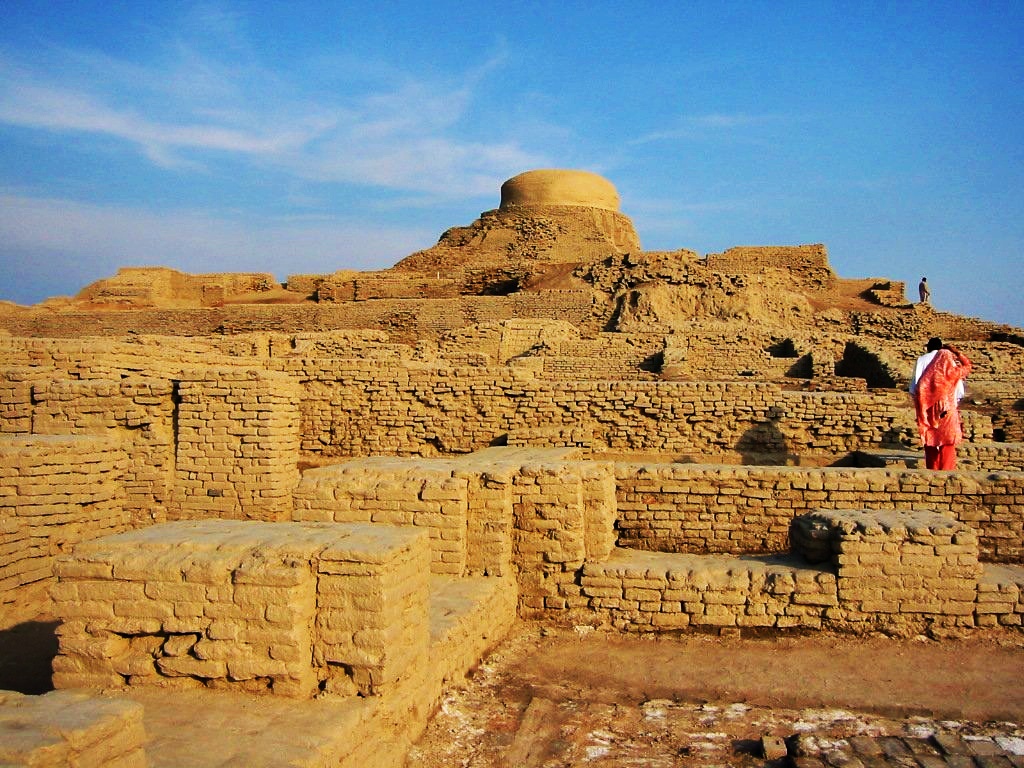
Indus Valley Civilization
The Indus Valley Civilization, one of the world’s earliest urban cultures, flourished around 2500 BCE in what is now Pakistan and northwest India. This ancient civilization is renowned for its advanced urban planning, sophisticated architecture, and complex societal structures. The major sites of Mohenjo-Daro and Harappa are testament to the civilization’s remarkable achievements, featuring well-organized cities with grid layouts, elaborate drainage systems, and impressive public baths. The inhabitants of the Indus Valley were skilled artisans, as evidenced by their intricate pottery, seals, and jewelry. Despite its significant accomplishments, much about the Indus Valley Civilization remains a mystery, including the undeciphered script of its language and the reasons for its decline. Visiting these archaeological sites provides a fascinating glimpse into a highly developed, yet enigmatic, ancient society that laid the foundations for future cultures in the region.
Mohenjo-Daro
Significance and Historical Context
Mohenjo-Daro, located in the Sindh province of Pakistan, is one of the most important archaeological sites of the Indus Valley Civilization. Dating back to around 2500 BCE, it represents one of the earliest urban settlements in human history. Mohenjo-Daro, meaning “Mound of the Dead,” was discovered in the 1920s and has since provided critical insights into the sophistication of early urban planning, social organization, and daily life in the Indus Valley Civilization. The city’s layout, featuring well-planned streets and advanced drainage systems, reflects a high level of civic management and architectural prowess.
Key Attractions and Features
Key attractions at Mohenjo-Daro include the Great Bath, a large, public bathing structure that highlights the importance of ritualistic cleansing and community activities. The city’s granary, possibly used for storage of surplus crops, underscores the civilization’s agricultural efficiency. Additionally, the intricate network of streets and alleys, lined with residential and public buildings, showcases advanced urban planning. The site also includes a complex drainage system, with covered sewers and individual bathing areas, indicating a high priority on hygiene and public health. Artifacts such as pottery, tools, and jewelry provide further glimpses into the daily lives and artistic achievements of the people who lived there.
Harappa
Importance and Historical Overview
Harappa, situated in Punjab, Pakistan, is another major city of the Indus Valley Civilization and is crucial for understanding this ancient society. Like Mohenjo-Daro, Harappa dates back to approximately 2500 BCE and was discovered in the 1920s. The city is a testament to the civilization’s remarkable advancements in urban planning, architecture, and socio-economic organization. Harappa’s layout and artifacts have provided valuable information about the trade networks, social structures, and cultural practices of the Indus Valley people.
Main Sites and Discoveries
Among the significant discoveries at Harappa are the remnants of its well-planned city layout, including a fortified citadel and a lower town. The granary at Harappa is one of the largest structures, suggesting the city’s role as an important center for storage and distribution of agricultural produce. Numerous residential buildings, workshops, and public spaces reveal a well-organized urban center. Artifacts such as seals, pottery, and figurines found at Harappa offer insights into the economic activities, religious beliefs, and artistic expressions of its inhabitants. The seals, in particular, with their undeciphered script, remain one of the most intriguing aspects of the Indus Valley Civilization, hinting at a complex and literate society.
Both Mohenjo-Daro and Harappa, as cornerstones of the Indus Valley Civilization, provide a window into one of the earliest and most advanced urban cultures in human history. Exploring these sites allows us to appreciate the ingenuity and complexity of our ancient ancestors.
Gandhara Civilization
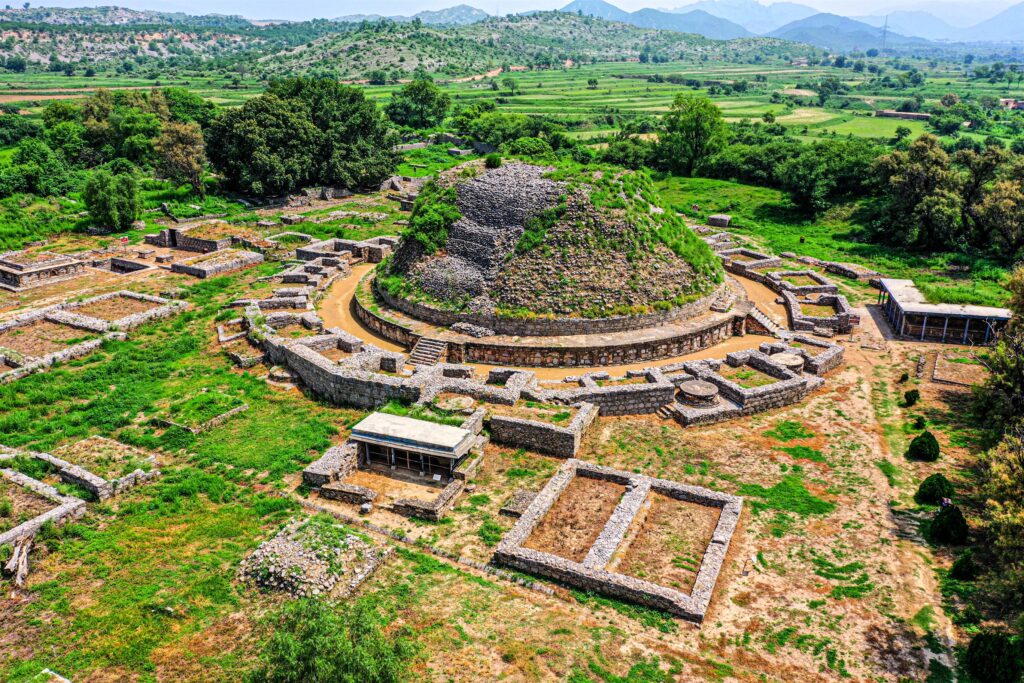
The Gandhara Civilization, flourishing from around the 6th century BCE to the 5th century CE, was a cultural and intellectual hub located in what is now northern Pakistan and eastern Afghanistan. Renowned for its unique synthesis of Greco-Roman and Indian art and culture, the civilization became a melting pot of influences due to its strategic position along ancient trade routes. Key sites such as Taxila and Swat Valley stand as testaments to Gandhara’s historical significance and contributions to the spread of Buddhism. Taxila, a major center of learning and commerce, housed universities where scholars from various parts of the world came to study. The art of Gandhara is particularly notable for its realistic portrayal of Buddhist figures, combining Hellenistic artistic techniques with local styles, resulting in the distinctive Gandharan art that greatly influenced Buddhist iconography across Asia. The region’s monasteries, stupas, and sculptures reflect a profound spiritual and artistic heritage, making the Gandhara Civilization a crucial chapter in the history of art and religion.
Taxila
Historical Importance
Taxila, located near Islamabad in modern-day Pakistan, was a prominent city of the ancient Gandhara civilization. Its strategic position at the crossroads of Central Asia and South Asia made it a critical hub for commerce, culture, and learning from the 6th century BCE to the 5th century CE. Renowned as a major center of education, Taxila attracted scholars from around the world, including the famous Indian philosopher Chanakya and the Greek historian Strabo. It played a pivotal role in the spread of Buddhism, with its numerous monasteries and stupas serving as key sites for Buddhist learning and practice.
Major Ruins and Museum
The ruins of Taxila encompass a range of archaeological sites, including the ancient cities of Bhir Mound, Sirkap, and Sirsukh. Bhir Mound represents the earliest settlement, dating back to the Achaemenid period, while Sirkap and Sirsukh reflect the city’s evolution under Greek, Scythian, and Kushan rule. Notable structures include the Dharmarajika Stupa, the Jaulian Monastery, and the Mohra Muradu Monastery, each showcasing the architectural and religious significance of the region. The Taxila Museum, located near the ruins, houses a vast collection of artifacts unearthed from these sites, including statues, coins, pottery, and tools, offering a comprehensive glimpse into the daily life, art, and culture of the Gandhara civilization.
Takht-i-Bahi
Overview and Significance
Takht-i-Bahi, located in the Mardan district of Khyber Pakhtunkhwa, Pakistan, is one of the most well-preserved Buddhist monastic complexes of the Gandhara civilization. Established in the early 1st century CE, Takht-i-Bahi, which means “Throne of the Water Spring,” thrived until the 7th century. It holds significant historical and religious importance due to its role in the spread of Buddhism and its reflection of the region’s architectural and cultural advancements. The site’s elevated position on a hill provided strategic advantages and has contributed to its excellent state of preservation.
Architectural Highlights
The architectural layout of Takht-i-Bahi is a testament to the ingenuity of ancient Buddhist monastic design. The complex includes a series of courtyards surrounded by meditation cells, stupas, and assembly halls. The main stupa court, with its central stupa surrounded by smaller votive stupas, is a focal point of the site, showcasing intricate stone carvings and reliefs that depict Buddhist motifs and narratives. The monastery’s residential quarters, storage areas, and assembly halls highlight the organized communal living and spiritual practices of its inhabitants. The site’s design not only facilitated religious activities but also offered a serene environment conducive to meditation and learning, embodying the spiritual and architectural zenith of the Gandhara civilization.
Mughal Era
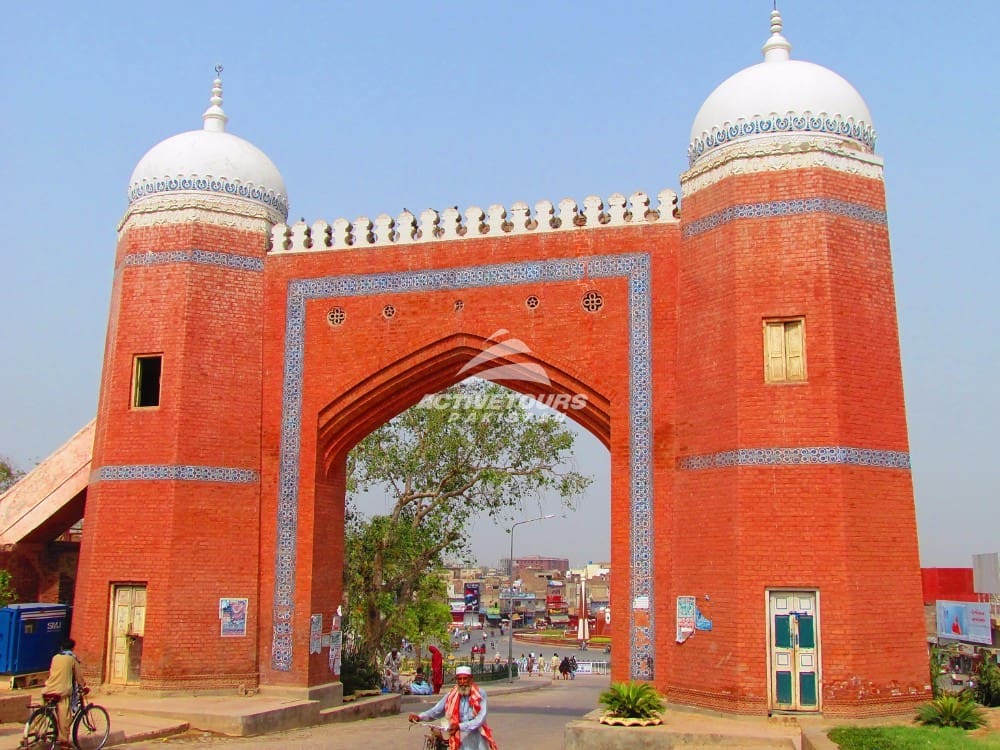
Lahore
Lahore, the cultural heart of Pakistan, is a city steeped in history and architectural grandeur, particularly from the Mughal era. Often referred to as the “City of Gardens” due to its many lush, green spaces, Lahore was the vibrant capital of the Mughal Empire for many years. Its historical significance is underscored by iconic landmarks such as the Lahore Fort and the Badshahi Mosque, both exemplifying the intricate artistry and architectural brilliance of Mughal design. The Shalimar Gardens, a UNESCO World Heritage Site, further showcases the opulence and meticulous planning characteristic of Mughal landscaping. Additionally, Lahore’s Walled City, with its narrow, bustling streets and historic buildings, offers a glimpse into the city’s rich past and vibrant present. Lahore is not only a treasure trove of historical sites but also a thriving center of cultural, intellectual, and artistic activities in Pakistan, reflecting its enduring legacy as a crossroads of civilizations and a beacon of heritage.
Lahore Fort
Historical Background
Lahore Fort, also known as Shahi Qila, is a majestic citadel situated in the heart of Lahore, Pakistan. It has a rich history dating back to the 11th century, although most of its current structure was built during the Mughal era, particularly under Emperor Akbar in the late 16th century. The fort served as a royal residence and a military stronghold, playing a pivotal role in the administration and defense of the Mughal Empire. Over the centuries, various rulers, including the Sikhs and the British, made modifications to the fort, adding layers to its historical significance.
Key Structures and Features
The Lahore Fort is renowned for its impressive architecture and ornate decorations. Key structures within the fort include the Sheesh Mahal (Palace of Mirrors), a stunning hall embellished with intricate mirror work and frescoes; the Diwan-e-Aam (Hall of Public Audience) and the Diwan-e-Khas (Hall of Private Audience), where the emperor addressed the public and held private meetings, respectively. The Naulakha Pavilion, with its distinctive white marble structure and precious inlays, exemplifies Mughal luxury. The fort’s Alamgiri Gate, added by Emperor Aurangzeb, is another notable feature, serving as the main entrance and an iconic symbol of Mughal architectural prowess.
Shalimar Gardens
Historical Significance
The Shalimar Gardens, located in Lahore, are one of the most exquisite examples of Mughal garden design and are a UNESCO World Heritage Site. Commissioned by Emperor Shah Jahan in 1641, these gardens were designed as a royal leisure retreat, reflecting the grandeur and aesthetic sensibilities of the Mughal court. The gardens were an embodiment of paradise on earth, integrating natural beauty with architectural precision, and were used for both private enjoyment and public functions.
Layout and Attractions
The Shalimar Gardens are structured in a classic Persian-style layout, featuring three terraces that descend in a series of cascades. Each terrace is designed with a distinct theme and purpose, enhancing the overall harmony and balance of the gardens. The upper terrace, known as Farah Baksh (Bestower of Pleasure), includes elaborate marble pavilions and a central pool with a series of fountains. The middle terrace, Faiz Baksh (Bestower of Goodness), houses the main water reservoir feeding the garden’s intricate waterworks. The lower terrace, Hayat Baksh (Bestower of Life), is adorned with lush lawns, flower beds, and additional fountains. The gardens are also embellished with walkways, reflecting pools, and various pavilions, offering visitors a serene and picturesque environment.
Badshahi Mosque
Historical Context
The Badshahi Mosque, located opposite the Lahore Fort, is one of the largest and most iconic mosques in the world. Commissioned by Mughal Emperor Aurangzeb in 1671, it was completed in 1673 and symbolizes the zenith of Mughal religious architecture. The mosque was built to commemorate Aurangzeb’s military victories and to serve as a grand place of worship for the emperor and his court.
Architectural Details
The Badshahi Mosque is renowned for its monumental scale and majestic beauty. Constructed primarily from red sandstone with intricate marble inlays, the mosque features a vast courtyard that can accommodate over 55,000 worshippers. Its main prayer hall is crowned with three grand domes made of white marble, which contrast strikingly with the red sandstone of the structure. The mosque’s four towering minarets, each standing at 176 feet, frame the complex, adding to its imposing presence. The interior of the prayer hall is adorned with elaborate frescoes, stucco tracery, and intricate tile work, reflecting the artistic mastery of Mughal artisans. The mosque’s entrance gate, with its richly decorated archways and calligraphy, serves as a breathtaking introduction to one of the most significant architectural achievements of the Mughal era.
Colonial Period
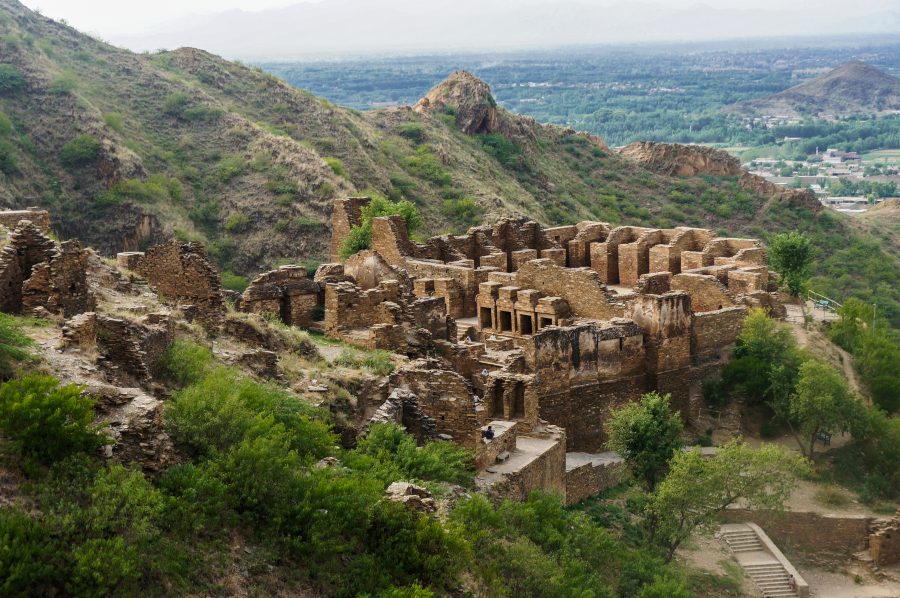
Karachi
Karachi, the largest city and economic hub of Pakistan, is a vibrant metropolis with a rich cultural heritage and a diverse population. Situated on the Arabian Sea coast, Karachi has been a center of trade, commerce, and cultural exchange for centuries, attracting people from various regions and backgrounds. The city’s history dates back to ancient times when it served as a fishing village and a strategic port for maritime trade. Over the centuries, Karachi has witnessed the influences of different civilizations, including the Arabs, Persians, and British, which have left their mark on its architecture, cuisine, and cultural traditions.
Today, Karachi is a bustling cosmopolitan city, known for its dynamic energy, bustling markets, and modern infrastructure. It is home to a plethora of historical landmarks such as Quaid-e-Azam’s Mausoleum, dedicated to the founder of Pakistan, Muhammad Ali Jinnah, and Frere Hall, a beautiful colonial-era building that now houses an art gallery and library. The city’s coastline is adorned with picturesque beaches, including Clifton Beach and Hawksbay, offering residents and visitors alike a chance to relax and enjoy the sea breeze.
Moreover, Karachi’s cultural diversity is reflected in its vibrant arts scene, culinary offerings, and festivals. The city hosts numerous art galleries, theaters, and cultural centers, showcasing the talents of local artists and performers. Its food scene is equally diverse, with a wide range of cuisines representing various cultures, from traditional Pakistani dishes to international flavors.
In essence, Karachi is a melting pot of cultures, a bustling economic center, and a city that continues to evolve while preserving its historical roots. It remains a symbol of Pakistan’s progress, resilience, and the spirit of unity in diversity.
Quaid-e-Azam’s Mausoleum
Historical Importance
Quaid-e-Azam’s Mausoleum, located in Karachi, is a revered monument that serves as the final resting place of Muhammad Ali Jinnah, the founder and first Governor-General of Pakistan. Completed in 1971, the mausoleum holds immense historical and cultural significance for Pakistanis, symbolizing the nation’s struggle for independence and the vision of its founding father. It stands as a monument of national unity, inspiring generations with Jinnah’s principles of unity, faith, and discipline.
Key Features and Visitor Information
The mausoleum’s architecture is a blend of modern and traditional elements, designed by the renowned architect Yahya Merchant. The white marble structure is crowned by a large dome and surrounded by lush gardens, creating a serene and dignified atmosphere. Inside, visitors can pay their respects at Jinnah’s tomb, which is adorned with Quranic verses and intricate marble work.
The mausoleum complex also includes a museum showcasing Jinnah’s personal belongings, photographs, and documents, offering insights into his life and leadership. Visitors can learn about Pakistan’s history and the independence movement through multimedia exhibits and artifacts. The mausoleum is open to the public, and guided tours are available to enhance the visitor experience and provide historical context.
Frere Hall
Colonial History
Frere Hall, located in Karachi’s Civil Lines area, is a historic building that dates back to the British colonial era in the 19th century. Named after Sir Bartle Frere, a British colonial administrator, the hall was originally designed as a town hall and library. It served as a cultural and social hub during the colonial period, hosting literary gatherings, exhibitions, and public events.
Current Use and Attractions
Today, Frere Hall continues to be a cultural landmark in Karachi, albeit with a different purpose. The building now houses the Liaquat National Library, which is one of Pakistan’s largest libraries and a valuable resource for researchers, scholars, and book lovers. The library’s collection includes a wide range of books, manuscripts, and periodicals covering various subjects.
In addition to its role as a library, Frere Hall remains a venue for cultural events, art exhibitions, and performances. The surrounding gardens, known as Bagh-e-Jinnah, provide a picturesque setting for leisurely strolls and outdoor gatherings. The hall’s distinctive architecture, characterized by its Indo-Saracenic style with Gothic and Renaissance influences, makes it a popular spot for architecture enthusiasts and photographers.
Overall, Frere Hall stands as a testament to Karachi’s colonial heritage and continues to contribute to the city’s cultural and intellectual life, making it a must-visit destination for history buffs and art lovers alike.
Other Significant Sites
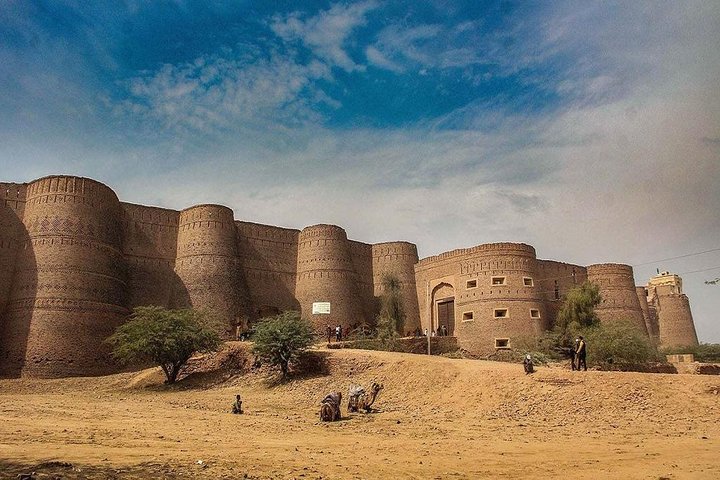
Rohtas Fort
Historical Context
Rohtas Fort, located near Jhelum in Punjab province, Pakistan, is a formidable fortress with a rich historical background. Built in the 16th century by Afghan king Sher Shah Suri, the fort served as a defensive stronghold against the Mughal Empire. Sher Shah Suri initiated the construction of Rohtas Fort after his victory over the Mughal emperor Humayun, intending to secure his hold over the region and prevent Mughal advances. The fort’s strategic location, surrounded by steep cliffs and the River Kahan, made it an impregnable fortress during that era.
Key Structures and Significance
Rohtas Fort is renowned for its robust architecture and military defenses. The fort covers a vast area and features several key structures, including the massive main gate known as the Sohail Gate, which is adorned with intricate carvings and inscriptions. The fortification walls, punctuated by bastions and watchtowers, offer panoramic views of the surrounding landscape. Within the fort, visitors can explore various structures such as the Haveli Maan Singh, Rani Mahal, and the Rohtas Fort Mosque, each showcasing distinct architectural styles and historical significance.
The fort’s historical significance lies in its role as a symbol of resistance and military prowess during the turbulent period of Mughal-Afghan conflicts. Its architectural splendor and strategic design make it a UNESCO World Heritage Site, attracting tourists, history enthusiasts, and architectural scholars from around the world.
Makli Necropolis
Historical Overview
The Makli Necropolis, located near Thatta in Sindh province, Pakistan, is one of the largest and most impressive necropolises in the world. Dating back to the 14th century, the Makli Necropolis served as the final resting place for rulers, Sufi saints, scholars, and nobles of various dynasties, including the Tughlaqs, Arghuns, and Mughals. The necropolis reflects the diverse cultural and religious influences that shaped the region over centuries.
Main Tombs and Mausoleums
The Makli Necropolis is a sprawling complex with thousands of tombs, mausoleums, and monuments spread over an area of approximately 10 square kilometers. Among its main attractions are the impressive mausoleums of prominent historical figures such as Jam Nizamuddin II, Mirza Jani Beg Tarkhan, and Diwan Shurfa Khan. These structures exhibit exquisite craftsmanship, featuring intricate tile work, marble carvings, and geometric patterns typical of Islamic art and architecture.
One of the most notable tombs at Makli is that of Shah Jahan’s wife, Empress Nur Jahan, known for its elegant design and delicate ornamentation. The necropolis also contains a variety of graves ranging from simple sandstone markers to elaborate marble mausoleums, showcasing the socio-economic diversity of those interred there.
The Makli Necropolis is not only a significant historical site but also a testament to the cultural heritage and artistic achievements of medieval Sindh. Its inclusion on UNESCO’s World Heritage List underscores its universal value as a site of outstanding universal significance.
Suggested Historical Tours
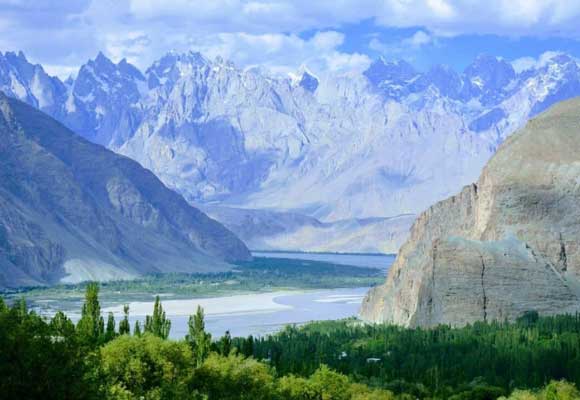
Northern Pakistan Tour
Embarking on a Northern Pakistan tour is a journey into the breathtaking landscapes, rich cultures, and ancient history of this region. Starting from Islamabad, the capital city, travelers can delve into the historical wonders of Taxila, an ancient center of learning and Buddhist heritage. Moving northward, Peshawar offers a glimpse into the vibrant bazaars and the historical significance of Takht-i-Bahi, a UNESCO World Heritage Site known for its Buddhist monastic complex. Further exploration leads to the picturesque Swat Valley, renowned for its natural beauty, archaeological sites, and the Swat Museum showcasing artifacts from the region’s Gandhara civilization. The Northern Pakistan tour presents a blend of history, culture, and stunning landscapes, making it an unforgettable experience for travelers seeking adventure and discovery.
Islamabad
Islamabad, the capital city of Pakistan, is a modern metropolis known for its lush greenery, organized layout, and iconic landmarks. Visitors can explore the Faisal Mosque, one of the largest mosques in the world, with its striking modern architecture and serene ambiance. The Pakistan Monument, shaped like a blooming flower, offers panoramic views of the city and showcases the country’s diverse cultural heritage. Nature lovers can visit the Margalla Hills National Park for hiking and wildlife spotting, while art enthusiasts can explore the Lok Virsa Museum for a glimpse into Pakistan’s traditional arts and crafts.
Taxila and Museum Visit
A short drive from Islamabad takes you to Taxila, an ancient city and UNESCO World Heritage Site with a rich history dating back thousands of years. The Taxila Museum houses a vast collection of Gandharan art, Buddhist relics, and artifacts from various periods, providing insights into the region’s cultural and archaeological significance. Visitors can explore the ruins of Taxila’s ancient monasteries, stupas, and universities, including the well-preserved Dharmarajika Stupa and the impressive Jaulian Monastery.
Peshawar
Peshawar, the historic city on the edge of the Khyber Pass, is a cultural melting pot with a fascinating blend of traditions and influences. The Peshawar Museum showcases Gandharan art, Islamic artifacts, and relics from the region’s ancient civilizations. A stroll through the bustling Qissa Khwani Bazaar, known as the “Street of Storytellers,” offers a glimpse into Peshawar’s vibrant marketplace culture, filled with spices, fabrics, handicrafts, and traditional foods.
Takht-i-Bahi Visit
Near Peshawar lies Takht-i-Bahi, a UNESCO World Heritage Site and one of the most well-preserved Buddhist monastic complexes in Pakistan. Dating back to the 1st century CE, Takht-i-Bahi features courtyards, stupas, and meditation cells, showcasing the architectural and spiritual legacy of the Gandhara civilization.
Swat Valley
The Swat Valley, often called the “Switzerland of Pakistan,” is a picturesque region known for its lush valleys, crystal-clear rivers, and snow-capped mountains. The Swat Museum in Mingora houses a fascinating collection of Gandharan artifacts, Buddhist sculptures, and relics from the region’s diverse history. Travelers can explore ancient archaeological sites such as Butkara Stupa, Shingardar Stupa, and Udegram, offering insights into Swat’s ancient Buddhist heritage.
Abbottabad
Abbottabad, nestled in the Abbottabad District of Khyber Pakhtunkhwa, is a charming hill station surrounded by scenic beauty. Shimla Hill provides panoramic views of the city and surrounding mountains, ideal for photography and relaxation. The Ilyasi Masjid, a historic mosque built in a tranquil setting, offers a glimpse into the region’s architectural heritage. Lady Garden, a popular park with lush greenery and recreational facilities, is perfect for picnics and leisurely walks. Thandiani, a hill station near Abbottabad, provides a cool retreat with breathtaking views, making it a must-visit destination in the Northern Pakistan tour.
Southern Pakistan Tour
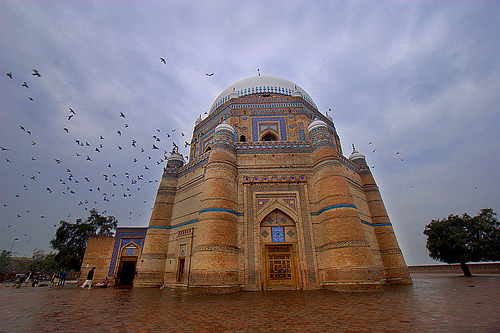
Karachi
Karachi, the vibrant metropolis and economic hub of Pakistan, offers a blend of historical landmarks and modern attractions.
Quaid-e-Azam’s Mausoleum
Quaid-e-Azam’s Mausoleum, located in Karachi, is a revered monument dedicated to Muhammad Ali Jinnah, Pakistan’s founding father. The mausoleum, with its impressive white marble architecture and serene surroundings, serves as a symbol of national unity and pride. Visitors can pay homage to Jinnah’s tomb and explore the museum showcasing his life and achievements, providing insights into Pakistan’s struggle for independence.
Frere Hall
Frere Hall, a historic building in Karachi’s Civil Lines area, is a cultural landmark with a rich colonial history. Originally designed as a town hall and library during the British era, Frere Hall now houses the Liaquat National Library, offering a treasure trove of books and manuscripts. The hall’s Indo-Saracenic architecture, lush gardens, and art exhibitions make it a favorite spot for art enthusiasts and history lovers alike.
Mohenjo-Daro
Mohenjo-Daro, an ancient archaeological site in Sindh province, is a UNESCO World Heritage Site and one of the most significant remnants of the Indus Valley Civilization.
Site Exploration and Museum
Visitors to Mohenjo-Daro can embark on a fascinating exploration of the well-preserved ruins, including the Great Bath, granary, and residential structures. The site provides a glimpse into the advanced urban planning and culture of one of the world’s earliest civilizations. The Mohenjo-Daro Museum nearby houses artifacts unearthed from the site, including pottery, seals, and tools, offering a deeper understanding of the Indus Valley Civilization’s lifestyle and craftsmanship.
Makli Necropolis
The Makli Necropolis, located near Thatta in Sindh, is a vast graveyard dating back to the 14th century, showcasing exquisite Islamic architecture and historical tombs.
Tombs and Mausoleums
Exploring the Makli Necropolis allows visitors to witness a stunning array of tombs and mausoleums, each adorned with intricate carvings, marble work, and geometric patterns. Notable tombs include those of rulers, Sufi saints, and dignitaries, showcasing the region’s cultural diversity and artistic heritage. The necropolis, with its sprawling landscape and centuries-old graves, is a testament to the enduring legacy of medieval Sindh and a must-visit destination for history enthusiasts.
Central Pakistan Tour
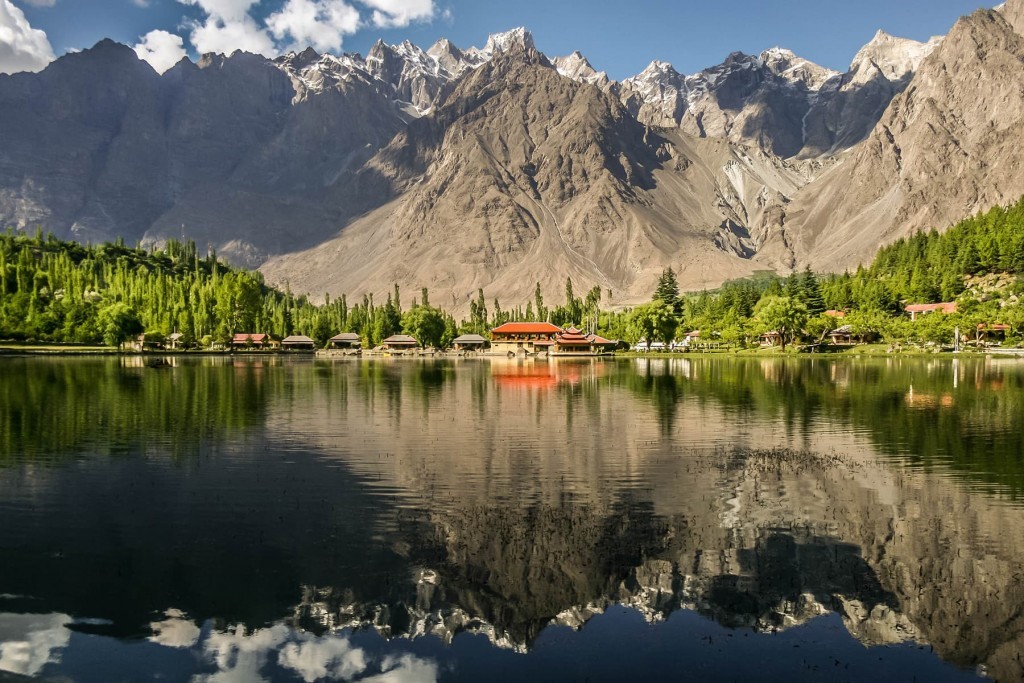
Lahore
Lahore, the cultural capital of Pakistan, is a treasure trove of historical and architectural wonders.
Lahore Fort
Lahore Fort, also known as Shahi Qila, is a majestic citadel showcasing Mughal architecture and historical significance. Visitors can explore key structures such as the Sheesh Mahal (Palace of Mirrors), Diwan-e-Aam (Hall of Public Audience), and Diwan-e-Khas (Hall of Private Audience), adorned with intricate designs and exquisite craftsmanship. The fort’s Alamgiri Gate and massive walls reflect the grandeur of the Mughal era.
Shalimar Gardens
The Shalimar Gardens, a UNESCO World Heritage Site, are a stunning example of Mughal landscape design. Visitors can stroll through terraced gardens, fountains, and pavilions, experiencing the serene ambiance and architectural beauty. The garden’s layout, water channels, and lush greenery make it a favorite spot for relaxation and photography.
Badshahi Mosque
Badshahi Mosque, adjacent to Lahore Fort, is one of the largest and most iconic mosques in the world. Its impressive domes, minarets, and marble interiors reflect Mughal splendor and Islamic architecture. Visitors can admire the mosque’s grandeur, attend prayers, and explore the surrounding courtyard and gardens.
Lahore Museum
Lahore Museum, located in the city center, houses a vast collection of artifacts, paintings, and sculptures representing Pakistan’s cultural heritage. Visitors can view Gandharan art, Mughal miniatures, ancient relics, and historical manuscripts, gaining insights into the region’s history, art, and archaeology.
Multan
Multan, known as the “City of Saints,” is famous for its Sufi shrines, ancient forts, and vibrant culture.
Sufi Saints’ Tombs
Multan is home to the tombs of renowned Sufi saints, including Shah Rukn-e-Alam, Bahauddin Zakariya, and Shah Shams Tabriz. These shrines are sacred sites for spiritual seekers and pilgrims, offering a glimpse into Sufism’s influence on the region’s religious and cultural fabric.
Multan Fort
The Multan Fort, overlooking the Chenab River, is an architectural marvel dating back to ancient times. Visitors can explore the fort’s massive walls, bastions, and gates, witnessing its strategic importance and historical significance. The fort’s interior houses museums, mosques, and historic structures, providing a glimpse into Multan’s past as a center of trade and civilization.
Rohtas Fort
Rohtas Fort, near Jhelum, is a formidable fortress built by Sher Shah Suri in the 16th century.
Exploration of Fortifications
Rohtas Fort offers an immersive experience in military architecture and historical defenses. Visitors can explore the fort’s massive walls, bastions, and strategic layout, designed to withstand enemy attacks. The fort’s Sohail Gate, Rani Mahal, and Haveli Maan Singh showcase the engineering prowess and defensive strategies of the Sher Shah era. Rohtas Fort’s historical significance as a symbol of resistance and military strength makes it a fascinating destination for history enthusiasts and adventurers.
Conclusion Historical Tours in Pakistan
Historical Tours in Pakistan Exploring the historical treasures of Pakistan through guided tours offers a captivating journey into the rich tapestry of the nation’s past. From the ancient ruins of Taxila and Mohenjo-Daro to the grandeur of Lahore Fort and Badshahi Mosque, each site unveils centuries-old stories of cultural, architectural, and historical significance. The Sufi shrines of Multan and the formidable fortifications of Rohtas Fort add depth to the narrative, reflecting Pakistan’s diverse heritage and enduring legacies. These tours not only educate and inspire but also foster a deeper appreciation for the resilience, creativity, and contributions of the civilizations that have shaped Pakistan’s identity. As travelers delve into Pakistan’s historical tours, they embark on a transformative experience that bridges the past with the present, celebrating the richness of human endeavor and the enduring spirit of exploration.
The historical significance of Pakistan’s heritage sites spans millennia, offering a diverse tapestry of cultures, civilizations, and achievements. From the ancient Indus Valley Civilization to the Mughal Empire and beyond, these sites showcase the country’s rich history and cultural contributions to the world. The ruins of Mohenjo-Daro and Taxila provide insights into early urban planning, trade, and societal structures, highlighting the sophistication of ancient civilizations. The Mughal-era monuments in Lahore, including Lahore Fort, Badshahi Mosque, and Shalimar Gardens, epitomize the grandeur and artistic excellence of that era. Multan’s Sufi shrines symbolize the spiritual and cultural heritage of Sufism, while Rohtas Fort stands as a testament to military architecture and strategic defense. The Makli Necropolis and Swat Valley’s archaeological sites further add layers to Pakistan’s historical legacy, showcasing the diversity and richness of its past civilizations. Overall, Pakistan’s historical significance lies in its ability to preserve and celebrate the multifaceted narratives of its past, offering a journey through time that illuminates the interconnectedness of cultures, religions, and civilizations that have shaped the region over centuries.
Read more Historical Tours in India
